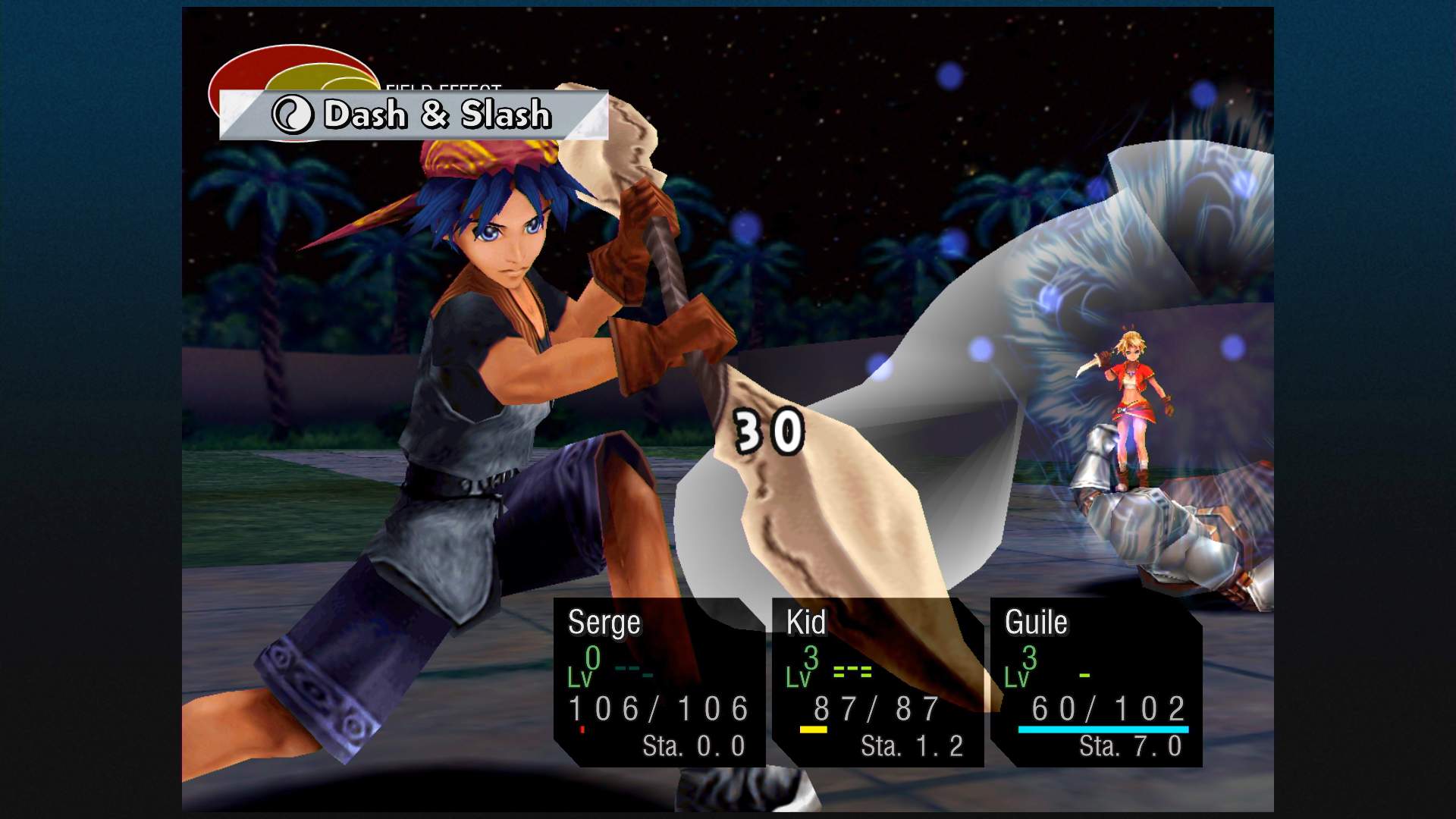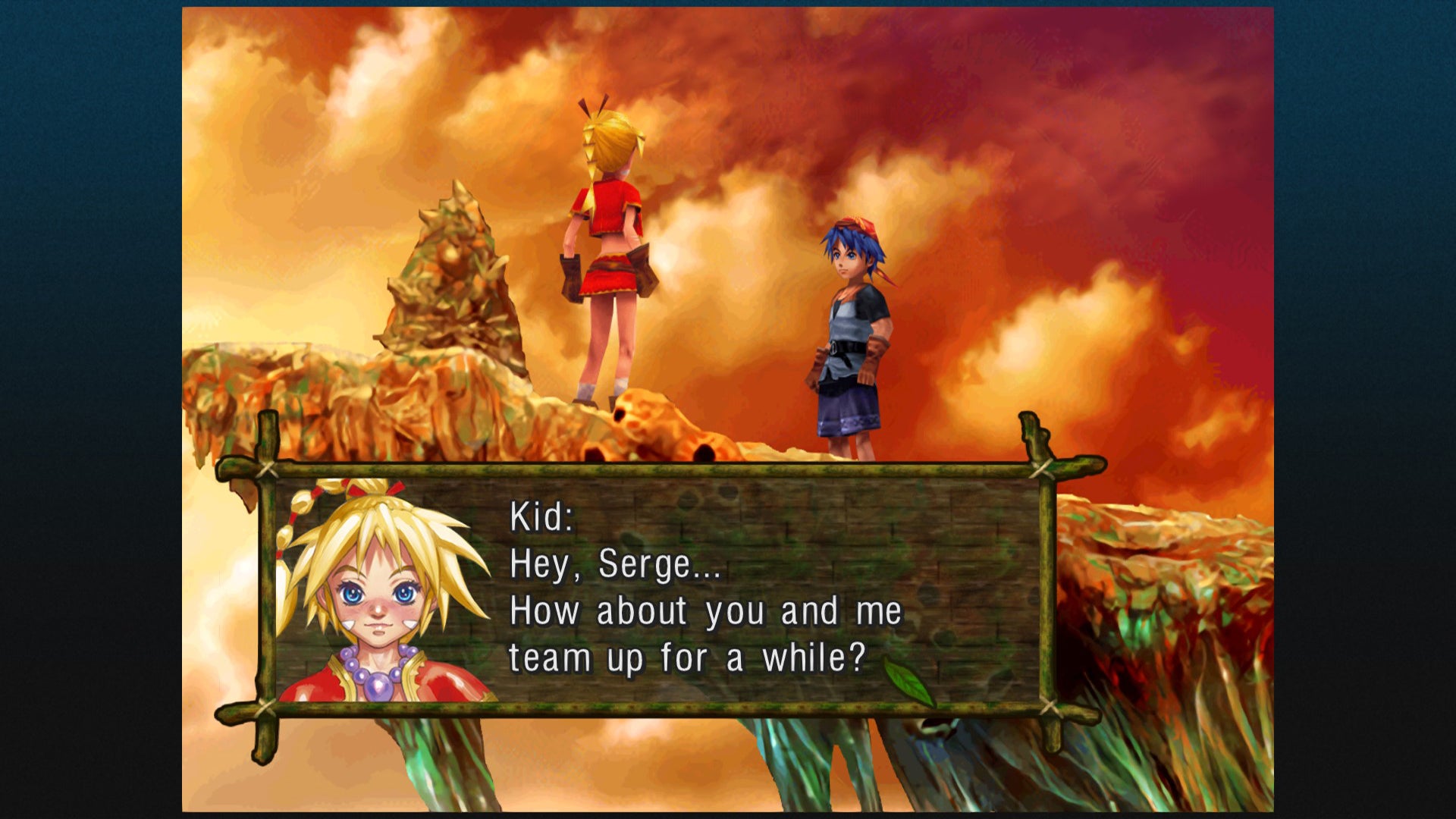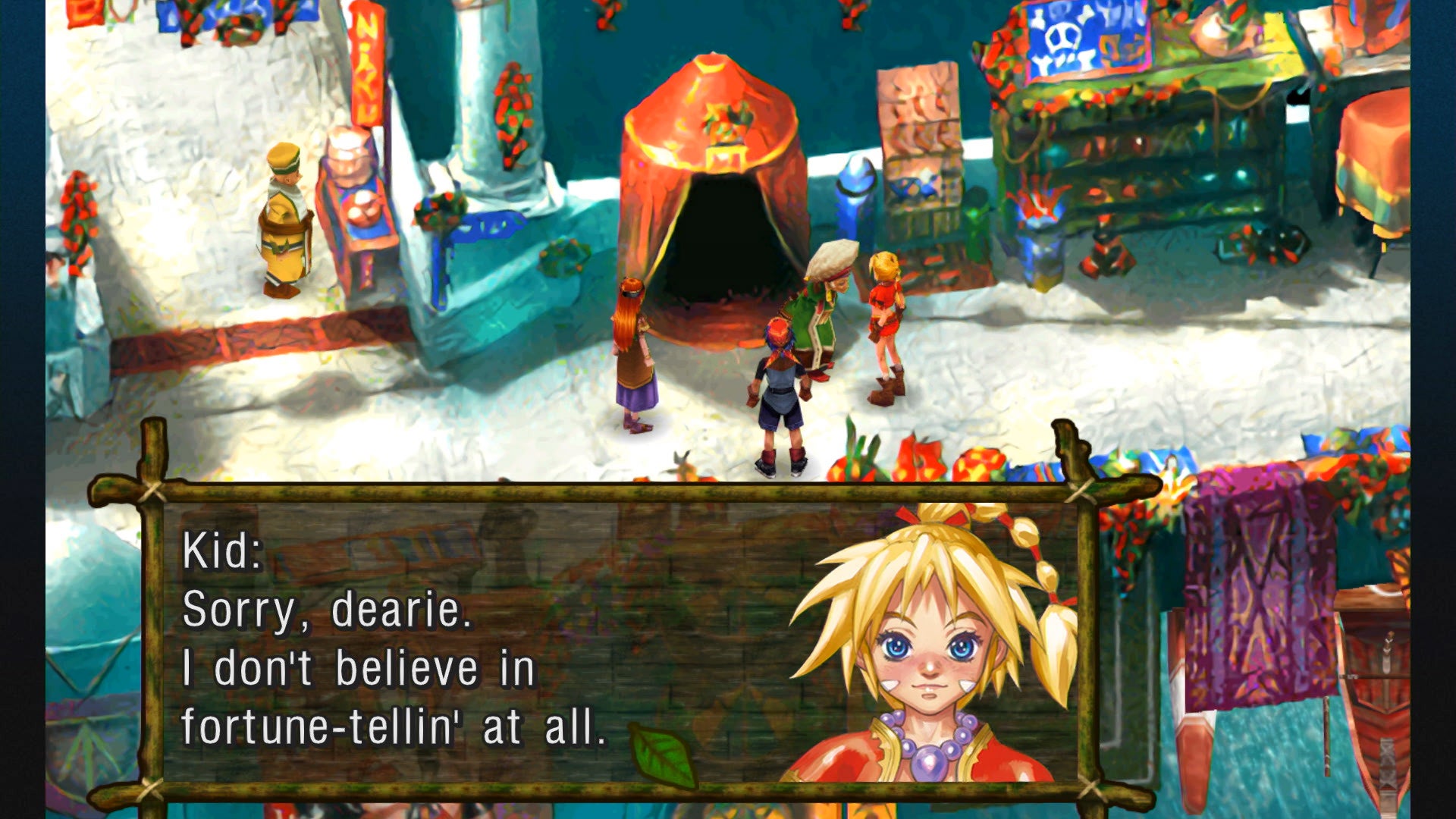Chrono Cross got an unfair rap back on the PS1. For a start, it didn’t release in Europe at all. Given its predecessor never got a European release and Final Fantasy was only just becoming truly international at the time this came out, it skipped Europe entirely. But even in North America and Japan, things weren’t plain sailing. The game’s creators know it, too. In an internally-conducted Square Enix interview that was shared with media as part of the remaster’s review package, one simpering question asks the creators of Chrono Cross how it felt for the first game to be “so well received” – a wild misreading of the situation at the time, likely based on a few arguably over-hyped and over-inflated review scores that some outlets and writers have quietly disowned since. Even in text, the amusement in the answer from Masato Kato (Chrono Cross’ original director and key staffer of the original Chrono Trigger) is clear. “In Japan it was far from being well received and it was severely bashed at the time, with comments like, “The story makes no sense” or “A game like this can’t be the sequel to Chrono Trigger!” It was quite a minefield,” Kato says. I remember those days. Kato is right; it was brutal. This game got savaged. And as I play Chrono Cross: Radical Dreamers Edition on Nintendo Switch, I wonder if we might see some of the same reactions again, just twenty years removed. Here’s the main thing folks should be aware of going in: this is only a sequel to Chrono Trigger in the loosest of possible ways. If you’re expecting to see all your favorite time-traveling heroes again, be prepared: you won’t. In fact, most of them are probably dead? Things are left deliberately vague. While the story of Chrono Cross does deal with direct repercussions and dangling threads from Trigger, it’s a very separate game. In hindsight, all these years later, this seems like a particularly canny choice. Chrono Trigger is one of the best games of all time – why try to make a direct sequel? It would inevitably disappoint. So Chrono Cross breaks off in a unique and intriguing direction. At the time, a lot of people dismissed Cross as not a real sequel, given the three ‘big names’ attached to hype Chrono Trigger at its release (Final Fantasy’s Hironobu Sakaguchi, Dragon Quest’s Yuji Horii, and Dragon Ball’s Akira Toriyama) weren’t involved with Cross. But the truth is that the most important lineage was there: Kato himself. Kato wrote Chrono Trigger’s script based on a loose outline from Horii. He was also one of several who held a directorial role on that game. Though he wasn’t credited for it, as the director’s chair on Trigger was a melting pot of as many as five or six people. For Cross, Kato went it alone, both writing and directing. The point is: this story is from the same person who wrote much of what people loved about Chrono Trigger. So that criticism is invalid. A better question for Square Enix’s Q&A would’ve been not ‘why are you so brilliant’, but to ask Kato how it feels to have a game that was extremely divisive at launch be re-assessed as a cult classic. That’s what happened to Chrono Cross over the last two decades; as it’s shrunk in relevance and availability, and as its predecessor has been rereleased numerous times, those who do seek it out have been able to appreciate it for what it is: quietly brilliant, but also no Trigger. Chrono Cross is definitely less easy to love than Trigger, however. It has all of those early 3D Japanese RPG foibles, and ramps up the non-linear structure from Trigger in such a way that I think some people can quite easily feel overwhelmed. As well as having a story that’s driven by time travel at its core, Cross also mixes in a Zelda-esque dimension-hopping element, where something done in one world might have echoing repercussions in another. In battles, an elemental system isn’t just a strength and weakness system that can be exploited - it’s absolutely essential for survival. In many areas, cool mechanics from Trigger make a return in ways both natural and superficial - so there’s still tech combos, and enemies are still encountered on the field - which was quite rare at the time of release. Rather than a tight-knit cast of memorable playable characters, Chrono Cross has 45 total party members - and you can’t even recruit them all in one play-through. Chrono Cross is a good game. It was treated severely unfairly back in the day, largely because it was a sequel to a game so beloved, a game so potently excellent, that anything which followed would be cast darkly in its shadow. Cross also isn’t as good as Trigger – make no mistake – but it’s a fine, solid Square RPG of its era… even if aspects of its story will send you cross-eyed. As for this remaster? Well, it’s largely par for the course. Square Enix has done a bunch of these re-releases now, and if you’ve played even one of them, you should know what to expect. Real-time 3D elements are rendered crisply, with higher-quality textures. Pre-rendered CG backgrounds are presumably lost to time in their source format, and so have been put through filters to look better on modern displays, with mixed results. You can disable enemy encounters in order to breeze through things – which in this game will be especially useful in New Game Plus. Character portrait artwork has been redone in a higher resolution, and there’s a new font that’s nowhere near as jarring as on some other Square Enix re-releases. Music is now presented without compression, and there’s also a handful of new arrangements from series composer and game score legend Yasunori Mitsuda (though these only appear in the menus). Best of all, most of these improvements can be toggled off, which leaves you presented with the PS1 game running at a higher resolution. Options! Options are good. All of these changes are fine and welcome. Square Enix could’ve done more, but it could’ve easily done less. I’m generally satisfied by it, though much less so with the performance on Switch when all of the new graphical changes are turned on; there’s some serious roughness and hiccuping that doesn’t make sense. Even remastered, a 22-year-old game shouldn’t be having frame rate problems. I’ve not yet tested the other console versions, but if you have the chance, it might be smarter to pick this up on PC, PS or Xbox instead – where, presumably, sheer hardware power means there’ll be less of that to deal with. Speaking of deals, the biggest of all is the new element where this remaster gets its name: the inclusion of Radical Dreamers. This is a separate game that was originally released for the Satellaview, a Japan-only SNES service where players could download games over-the-air using a TV signal. While a fan translation existed, this release marks the first time that Radical Dreamers has ever released in the West, and the first official re-release of it outside of a service that shut down 22 years ago. This inclusion is a bit of a no-brainer, but it’s also the sort of thing I wouldn’t necessarily expect Square Enix to bother with. This is the company that patched a perfectly good PC port of Chocobo World out of the newest version of Final Fantasy 8, for instance – they don’t always treat minor spin-offs with respect. As such, I’m ecstatic to see Radical Dreamers included in this release. Radical Dreamers is basically a text-based adventure game that tells the story of certain minor events that take place between Chrono Trigger and Cross. It’s not going to satisfy fans who want more from the crew and world of CT, but it’s a lovely companion piece to CC – and it’s fabulous to have it in the West at last. It’s a couple of hours’ experience, but it’s a brilliant little slice of history to have preserved. That’s the most important thing about this release, really. Performance issues on Switch aside, this is a perfectly-pitched version of a game that felt at risk of being lost to time – and now it’s both preserved and touched up for a new generation. Just beware: it’s not Chrono Trigger 2, it’s not as good as Chrono Trigger, and it’s frequently pretty confusing. Temper those expectations, and you’ll probably have a blast.



